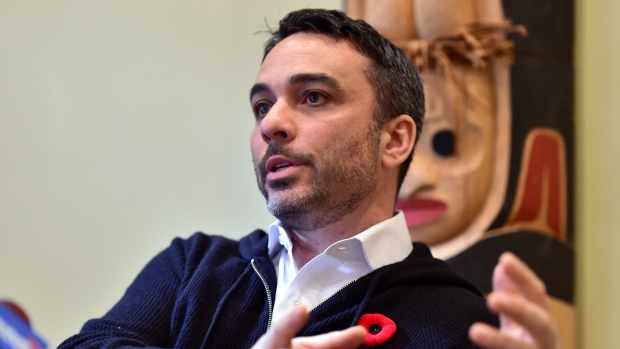Oct 31, 2017
Stranzl says he could have ‘110%’ fixed Sears if he had more time

Brandon Stranzl, Sears Canada’s former executive chairman, is defending his tenure at the now-bankrupt retailer and said neither he, nor Eddie Lampert – the retailer’s largest shareholder and chairman of Sears Holdings – are to blame from the department store’s demise.
Stranzl said Lampert declined to help fund his failed bid to keep the company afloat.
“Eddie is not as much of an investor in businesses that are as challenged as Sears Canada,” Stranzl told BNN in an interview Monday. “Eddie once said, ‘We are not in the business of buying cheap suits. Unless I can buy a suit for 10 cents and sell it for 50 cents, I don’t want to buy cheap suits.'”
Stranzl, who worked with Lampert before taking the helm at Sears Canada, pushed back against criticism of his efforts to revitalize the troubled retailer. In a blog post earlier this month, Lampert called Stranzl’s Sears 2.0 strategy to revitalize the troubled retailer “risky” and “untested.” Stranzl said he had no choice but to try something new.
“Any innovation, by definition, means you are going into an unknown territory. The business model of department stores is extremely challenged,” Stranzl said. “Sears 2.0 worked quite well in fact.”
Stranzl said the legacy costs of the business that were incurred before he arrived are ultimately to blame for Sears Canada’s failure.
“The company had legacy operating losses that existed as of 2015, before 2.0, so whatever strategy we pursued – whether it was 2.0, or 5.0 or 200.0 – those legacy operating losses were in excess of $300 million, and that’s really what caused the company to run into trouble,” said Stranzl.
Over the past decade, Sears Canada has paid out more than $1.4-billion in special dividends to investors. Stranzl said those payments were not responsible for the company’s fate.
“Sears Canada was in a very difficult position because the industry had disrupted the business model,” he said. “Whether you kept the money in or took the money out, I don’t think really would have made much of a difference on whether the business model would have been innovated to the point where it could work.”
After witnessing Sears’ slide into insolvency and, now, liquidation, Stranzl regrets not having had more time to turn the company around.
He told BNN he “110 per cent” believes that he could have fixed Sears if only he had arrived on the scene two or three years sooner, and expressed regret for the 16,000 employees who will be thrown out of work once Sears closes its doors for good.
“There’s no words,” he said. “I’m very, very sorry that this is where the company ended up. I did everything in my ability to prevent this from happening and to get us to a better place.”



